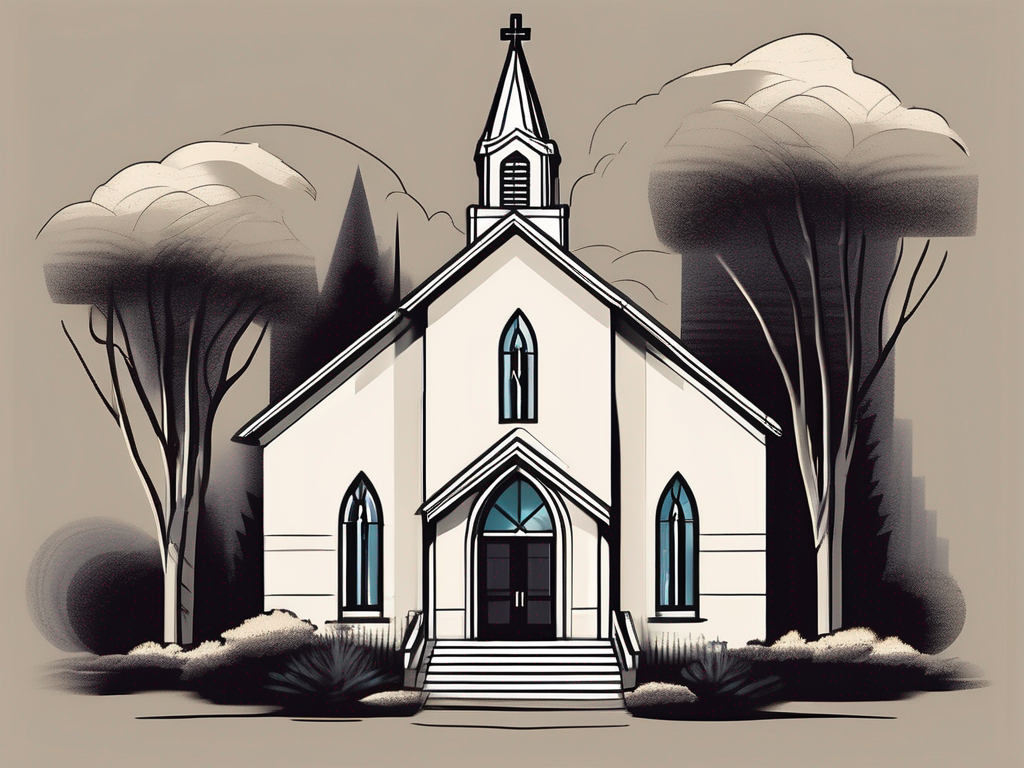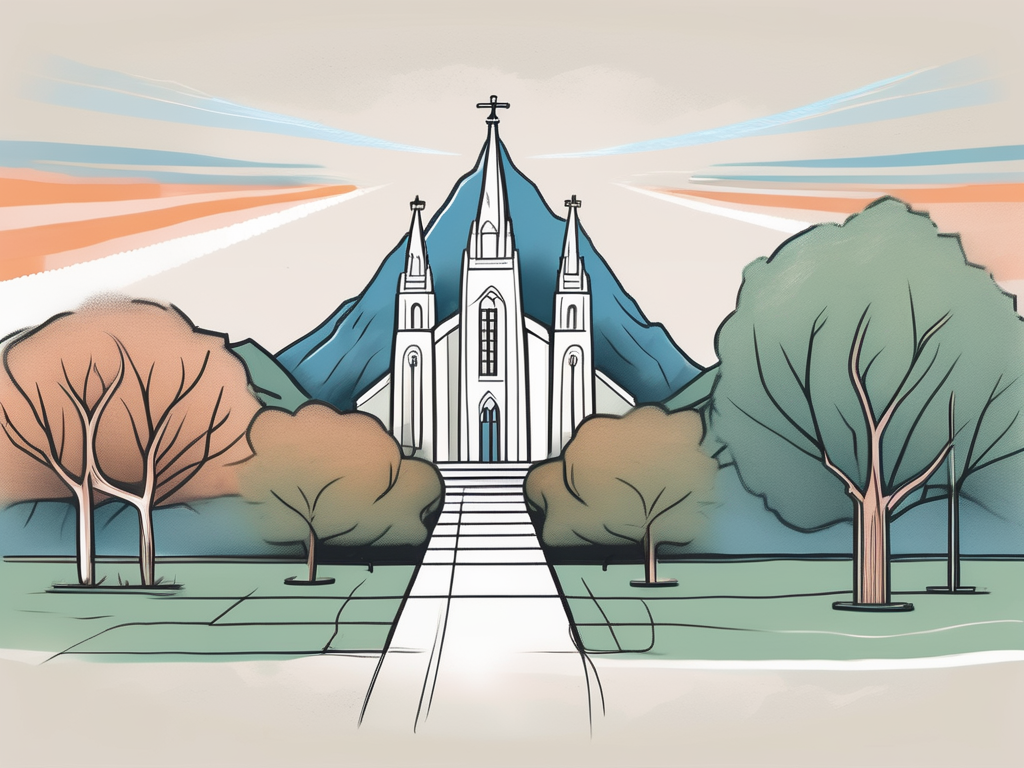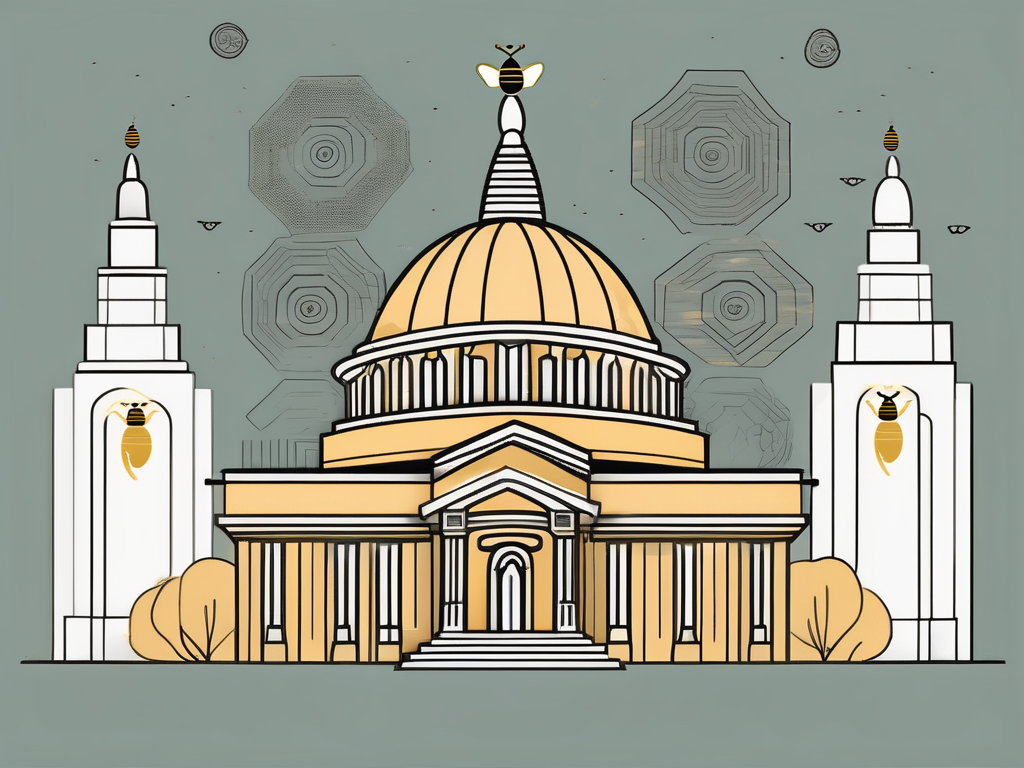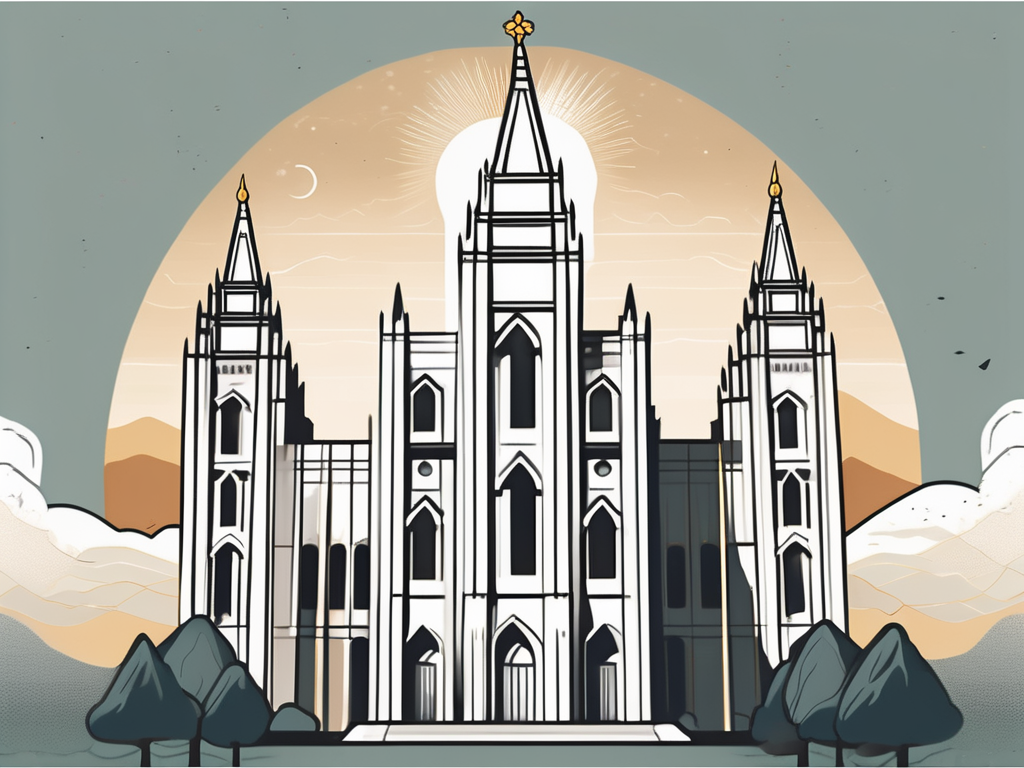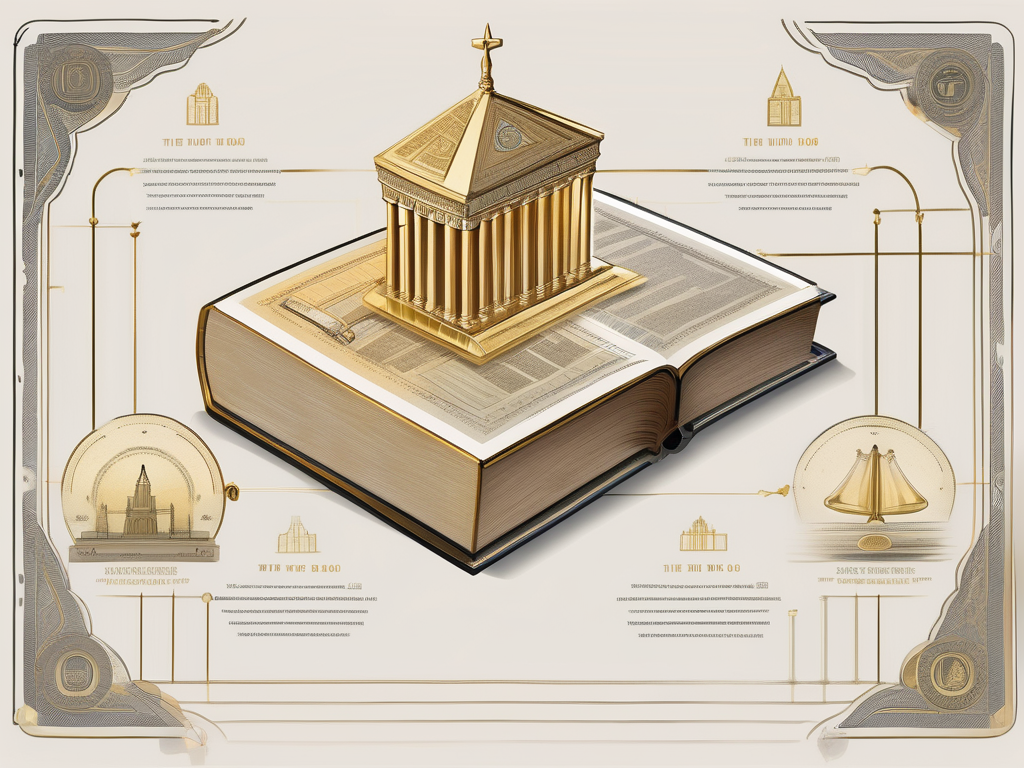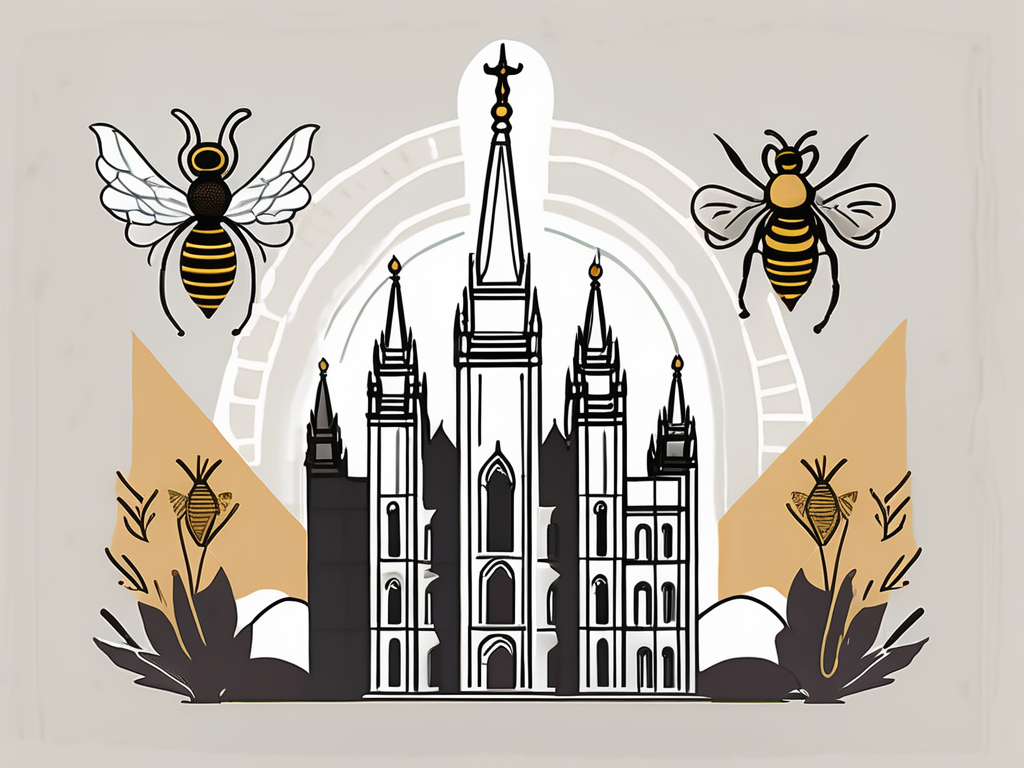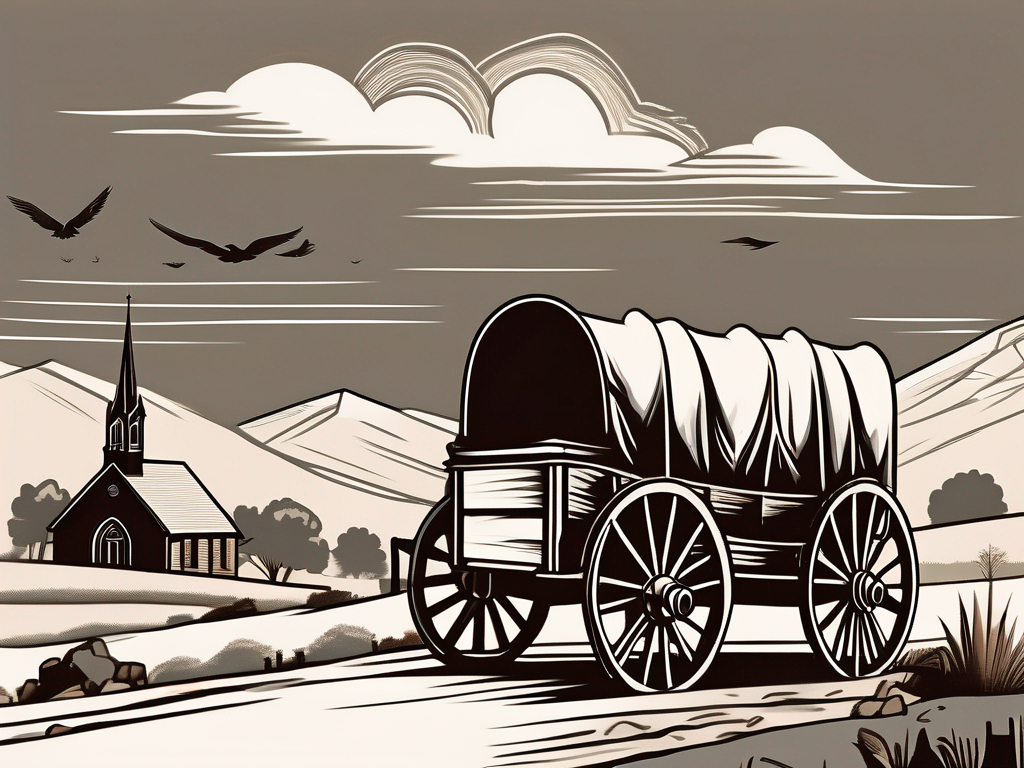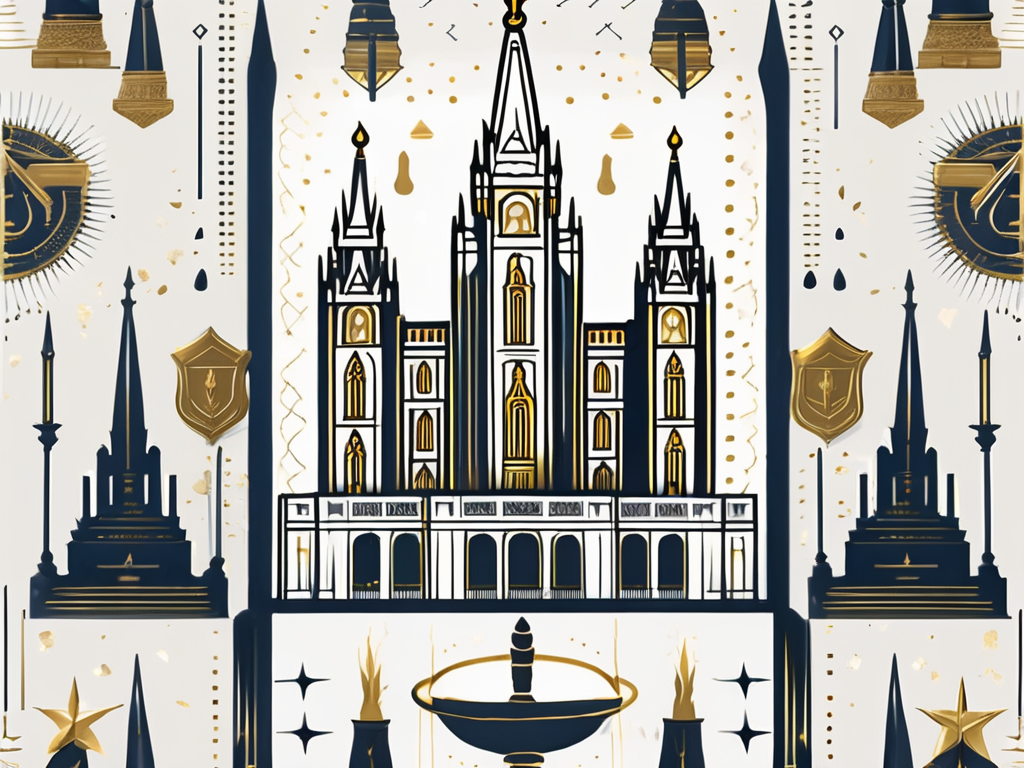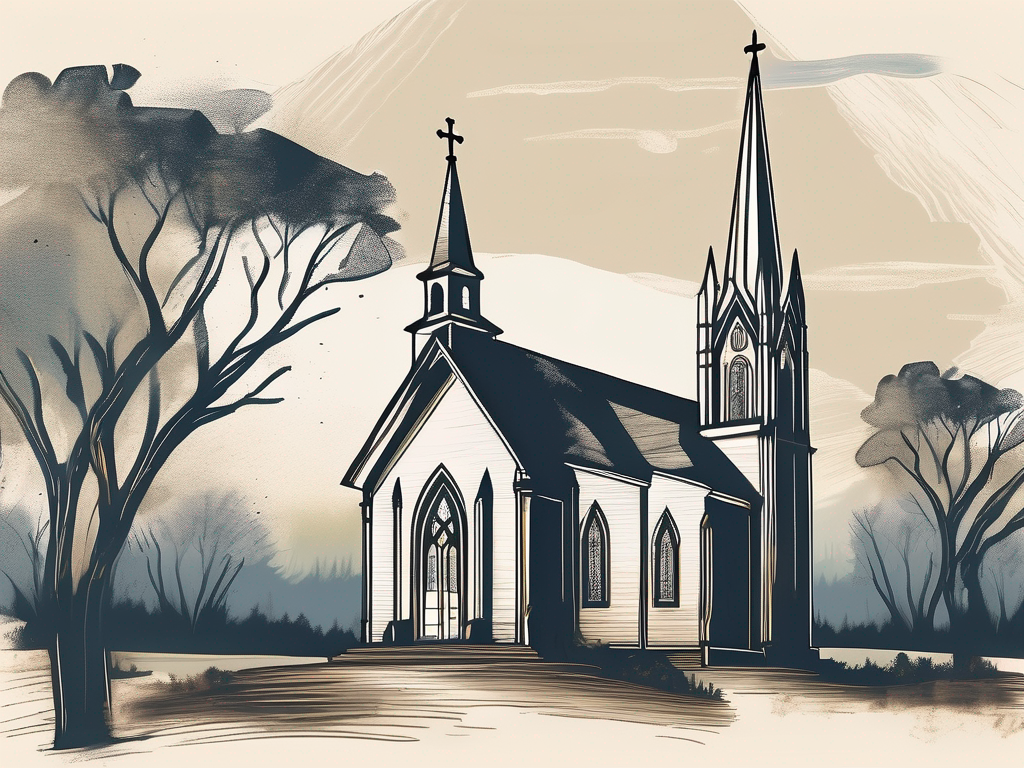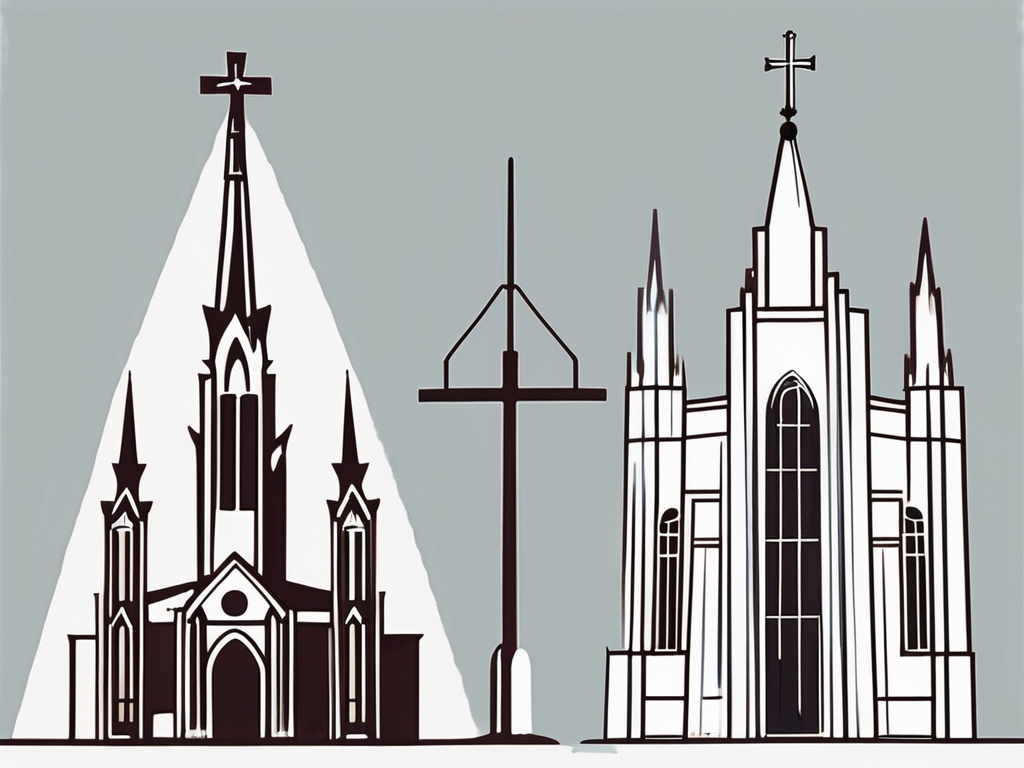Welcome to our article about the Mormon Church! In this piece, we will explore the basics of Mormonism, the structure of a Mormon Church, the various services they offer, their involvement in the community, and address some controversial topics and misconceptions. So, let’s dive in and learn more about the fascinating world of the Mormon Church!
Understanding the Basics of Mormonism
The Origins of Mormonism
The Mormon Church, officially known as The Church of Jesus Christ of Latter-day Saints (LDS Church), was founded in the early 19th century by Joseph Smith in upstate New York. Smith’s journey towards establishing the church began with a profound spiritual experience that would shape the course of his life and the lives of millions of followers.
According to the church’s teachings, Joseph Smith, a young man seeking answers to questions about religion and salvation, prayed fervently in a grove of trees near his home. In response to his sincere plea for guidance, he experienced what he described as a theophany, a personal encounter with God the Father and Jesus Christ. This divine visitation, known as the First Vision, marked the beginning of a new era in religious history.
In addition to the First Vision, Smith claimed to have received numerous other visitations from heavenly messengers, including the angel Moroni. According to Smith, Moroni directed him to a hillside where he unearthed a set of golden plates, inscribed with ancient writings. These plates, which Smith referred to as the Book of Mormon, contained a religious history of ancient American civilizations and were written in a language called Reformed Egyptian.
With divine assistance, Joseph Smith translated the enigmatic writings on the golden plates into English. The resulting text, the Book of Mormon, is considered a sacred record of God’s dealings with the ancient inhabitants of the Americas. It serves as an additional testament of Jesus Christ and complements the teachings found in the Bible.
Key Beliefs and Practices
Mormonism encompasses a unique set of beliefs and practices that distinguish it from other Christian denominations. Central to Mormon theology is the concept of eternal progression, which teaches that human beings have the potential to become like God and inherit eternal life.
Mormons place a strong emphasis on the importance of family. They believe that families can be united for eternity through sacred ordinances performed in their temples. These ordinances include marriage ceremonies, known as sealings, which bind couples together not only for this life but for all eternity. This eternal perspective on family relationships brings great comfort and hope to Mormon adherents.
Personal revelation is another fundamental aspect of Mormonism. Mormons believe that individuals can receive guidance and inspiration from God through prayer and spiritual promptings. This belief in ongoing revelation allows for a personal and dynamic relationship with the divine, providing a source of comfort and direction in navigating life’s challenges.
In addition to their spiritual beliefs, Mormons adhere to a strict moral code. They abstain from alcohol, tobacco, and illegal drugs, believing that these substances can impair physical and spiritual well-being. This commitment to health and self-discipline is seen as a way to honor and respect the body, which Mormons believe is a sacred gift from God.
Furthermore, Mormons are encouraged to engage in acts of service and charity, both within their own communities and on a global scale. The church places a strong emphasis on humanitarian aid and disaster relief efforts, seeking to alleviate suffering and promote the well-being of all people, regardless of their religious affiliation.
Overall, Mormonism is a rich and complex religious tradition that encompasses a wide range of beliefs and practices. Its origins in the early 19th century and the subsequent growth of the LDS Church have had a profound impact on the religious landscape of the United States and the world.
The Structure of a Mormon Church
The Mormon Church, also known as The Church of Jesus Christ of Latter-day Saints, has a well-defined structure that helps facilitate the spiritual growth and support of its members. This structure is designed to create a sense of community and provide opportunities for individuals to serve and contribute to the church.
The Role of the Bishop
In a Mormon Church, the bishop plays a crucial role as the spiritual leader of the local congregation or ward. Bishops are typically unpaid volunteers who dedicate their time and efforts to oversee the welfare of the members and offer guidance and support. They are chosen from among the members of the church and serve for a designated period of time.
As the bishop, they have the authority to assign individuals to various responsibilities within the ward. This includes calling members to serve in leadership positions, teach classes, or participate in community outreach programs. The bishop takes into consideration the talents, skills, and interests of each individual when making these assignments, aiming to create a well-rounded and engaged congregation.
Additionally, the bishop is responsible for conducting regular worship services, where members gather to participate in sacraments, listen to sermons, and engage in prayer and worship. They also provide counseling and support to individuals and families who may be facing challenges or seeking guidance in their personal lives.
The Function of the Ward and Stake
A ward is an individual congregation within the Mormon Church. It is comprised of a specific group of members who reside in a particular geographic area. Wards provide a sense of community and support, allowing members to interact and grow together in their faith.
Within a ward, various organizations and programs are established to meet the diverse needs of its members. These may include Sunday School classes, youth groups, women’s organizations, and men’s organizations. Each of these groups provides opportunities for individuals to learn, serve, and develop their spiritual and leadership skills.
On a larger scale, a stake is a group of wards in a designated geographic area. Stakes are overseen by a stake president, who is responsible for providing leadership and guidance to the bishops within the stake. Stakes organize events, such as conferences and social activities, that bring together members from multiple wards. This fosters a sense of unity and allows for the sharing of ideas and experiences.
Stakes also play a role in supporting the welfare of their members. They may have programs in place to assist individuals and families in times of need, such as providing food, financial assistance, or counseling services. The stake president works closely with the bishops to ensure that the needs of the members are met and that the ward and stake function effectively.
In conclusion, the structure of a Mormon Church is designed to create a supportive and nurturing environment for its members. Through the leadership of the bishop, the sense of community within the ward, and the guidance of the stake, individuals are able to grow in their faith and contribute to the overall mission of the church.
Mormon Church Services
The Mormon Church, also known as The Church of Jesus Christ of Latter-day Saints, holds various services and ceremonies that play a significant role in the spiritual lives of its members. These gatherings provide opportunities for worship, fellowship, and personal growth.
Sunday Worship
The core of Mormon worship takes place on Sundays. The main service, known as sacrament meeting, is a time for members to come together and partake of the sacrament, which consists of bread and water. This symbolic act serves as a reminder of Jesus Christ’s sacrifice and allows individuals to renew their commitment to follow His teachings.
During sacrament meeting, members also have the opportunity to listen to sermons delivered by fellow members of the congregation. These talks, often based on scriptures or personal experiences, provide spiritual guidance, encouragement, and inspiration. They offer a chance for individuals to learn from one another and deepen their understanding of the gospel.
Moreover, Sunday worship services provide a sense of community and fellowship. Members gather to worship collectively, share their testimonies, and support one another in their spiritual journeys. This communal aspect of Mormon worship fosters a sense of belonging and unity among the congregation.
Special Ceremonies and Ordinances
In addition to weekly services, the Mormon Church performs various special ceremonies and ordinances within its temples. These sacred rituals are considered essential for the eternal progression of Mormons and are reserved for active members in good standing.
One of the significant ceremonies performed in Mormon temples is baptism. Mormons believe that baptism is necessary for the remission of sins and the initiation of a lifelong commitment to follow Jesus Christ. Baptisms are performed by immersion in water and are seen as a symbolic cleansing and rebirth.
Another important temple ordinance is the temple sealing. This ceremony binds families together for eternity, according to Mormon beliefs. Through this sacred ritual, husbands, wives, and children are sealed together, creating eternal family units that extend beyond mortal life.
Additionally, the Mormon Church conducts endowment ceremonies in its temples. These ceremonies involve symbolic teachings, covenants, and promises that Mormons believe prepare individuals for exaltation and eternal life in the presence of God.
Temples hold a special place in the hearts of Mormons, as they are considered houses of the Lord. These sacred buildings are dedicated to the worship of God and are believed to be a place where individuals can feel closer to heaven. The peaceful and reverent atmosphere within temples provides a sanctuary for members to seek personal revelation, find solace, and strengthen their relationship with God.
In conclusion, Mormon Church services encompass a variety of worship experiences, from the weekly sacrament meetings that promote spiritual growth and fellowship, to the special ceremonies and ordinances performed in temples that are believed to be essential for eternal progression. These gatherings and rituals are integral to the faith and devotion of Mormons, providing opportunities for individuals to deepen their understanding of the gospel, strengthen their relationships with fellow believers, and draw closer to God.
The Mormon Church and the Community
The Mormon Church, also known as The Church of Jesus Christ of Latter-day Saints, is a religious organization that places a significant emphasis on missionary work and outreach. This commitment to reaching out to others and making a positive impact on the community is a core principle of the church.
Missionary Work and Outreach
One of the most well-known aspects of the Mormon Church is its missionary program. Young men and women, known as missionaries, dedicate eighteen to twenty-four months of their lives to share the teachings of the church with others around the world. They embark on this journey with a deep sense of purpose and a desire to bring hope and faith to those they encounter.
During their missions, Mormon missionaries engage in various activities to connect with individuals and communities. They participate in service projects, offering their time and skills to help those in need. Whether it’s assisting with construction projects, organizing community events, or providing support to local organizations, missionaries strive to make a positive impact wherever they go.
Furthermore, missionaries actively invite people to learn about the Mormon faith. They engage in conversations, answer questions, and share their personal testimonies of how their beliefs have shaped their lives. Through these interactions, they hope to inspire others to explore their own spiritual journeys and find meaning and purpose in their lives.
In addition to their efforts in spreading the teachings of the church, Mormon missionaries also provide humanitarian aid in communities in need. They work alongside local organizations and individuals to address pressing social issues, such as poverty, hunger, and lack of access to education and healthcare. By actively participating in these initiatives, missionaries demonstrate the church’s commitment to improving the lives of others and fostering a sense of unity and compassion.
Welfare and Humanitarian Efforts
Beyond the missionary program, the Mormon Church has an extensive welfare and humanitarian program that aims to provide assistance to both members and non-members alike. This program is rooted in the belief that all individuals deserve support and care, regardless of their religious affiliation.
One of the key components of the church’s welfare program is the operation of storehouses. These storehouses are stocked with food, clothing, and other necessities that are made available to individuals and families in need. The church’s members generously donate both their time and resources to ensure that these storehouses are well-stocked and ready to serve those who require assistance.
In times of natural disasters or other emergencies, the Mormon Church is known for its swift response and relief efforts. Through its vast network of volunteers and resources, the church provides aid and support to affected communities, both locally and internationally. This commitment to humanitarian efforts showcases the church’s dedication to alleviating suffering and promoting resilience in the face of adversity.
Furthermore, the Mormon Church actively partners with other organizations and governments to address larger social issues. Whether it’s advocating for human rights, promoting education, or combating poverty, the church seeks to make a lasting impact on a global scale. By working collaboratively, the church amplifies its efforts and contributes to positive change in society.
In conclusion, the Mormon Church’s commitment to missionary work, outreach, and humanitarian efforts is a testament to its core values of service, compassion, and unity. Through these endeavors, the church strives to make a positive impact on individuals, families, and communities, fostering a sense of hope, support, and belonging.
Controversies and Misconceptions about the Mormon Church
Polygamy and the Mormon Church
One common misconception about the Mormon Church is that they practice polygamy. Although polygamy was practiced by some early members of the church, it was officially discontinued in 1890 and is not condoned by the modern LDS Church. Today, Mormons adhere to monogamy and traditional marriage practices.
The Mormon Church and Racial Issues
The Mormon Church has faced criticism regarding their past exclusion of Black individuals from holding certain priesthood offices. However, in 1978, the church’s leadership received a revelation extending these privileges to all worthy male members, regardless of race. The church continues to address and learn from these historical issues, striving for inclusivity and equality.
In conclusion, the Mormon Church, also known as The Church of Jesus Christ of Latter-day Saints, is a religion that originated in the early 19th century. Its teachings revolve around family, personal revelation, and the eternal nature of human existence. With its unique structure, regular Sunday worship, special temple ceremonies, and commitment to outreach and community service, the Mormon Church provides its members with a holistic spiritual experience. Additionally, it is essential to address the controversies and misconceptions surrounding the church, such as past polygamous practices and the historical treatment of race. By understanding these aspects, we can gain a more comprehensive view of what the Mormon Church truly represents.
